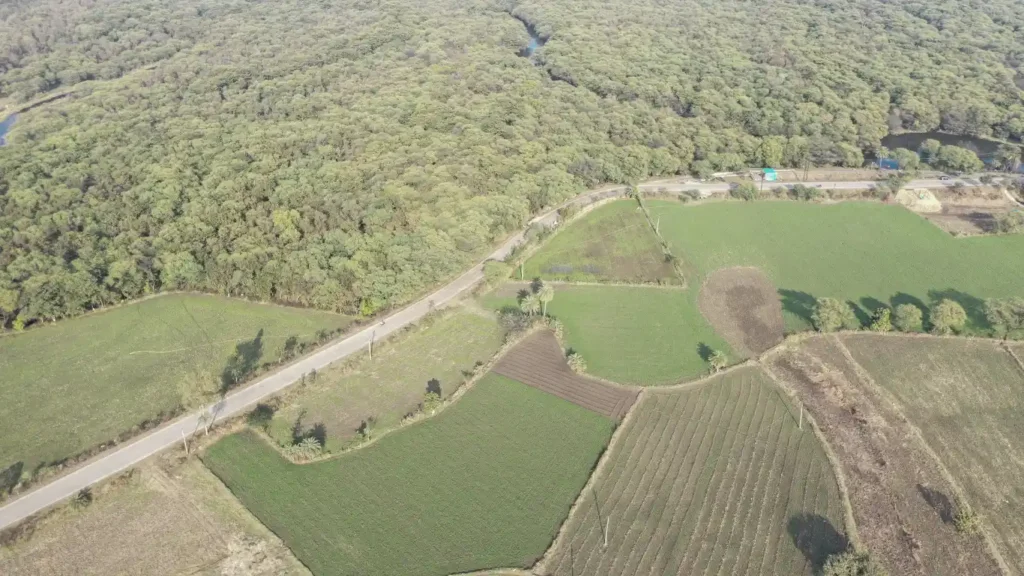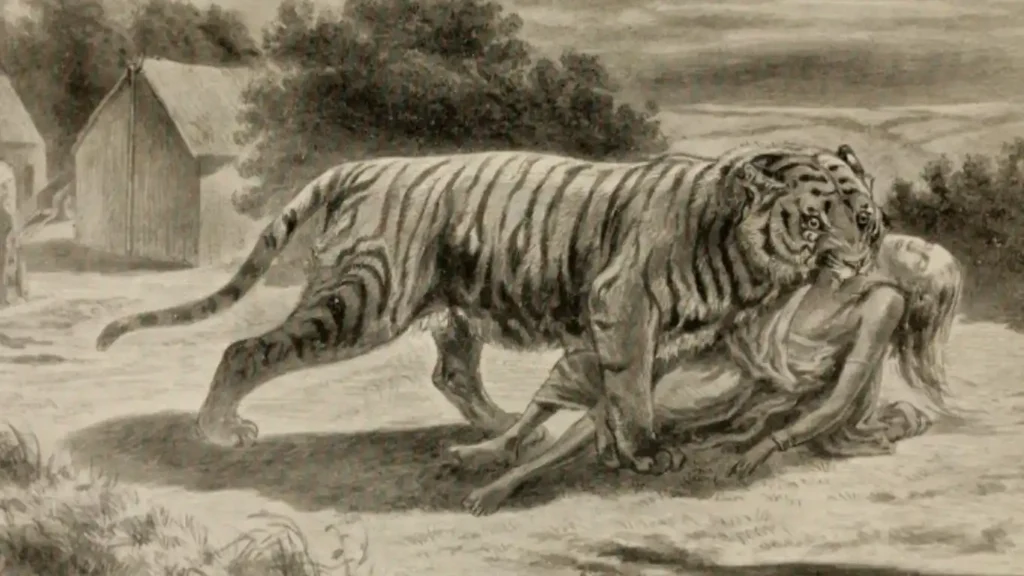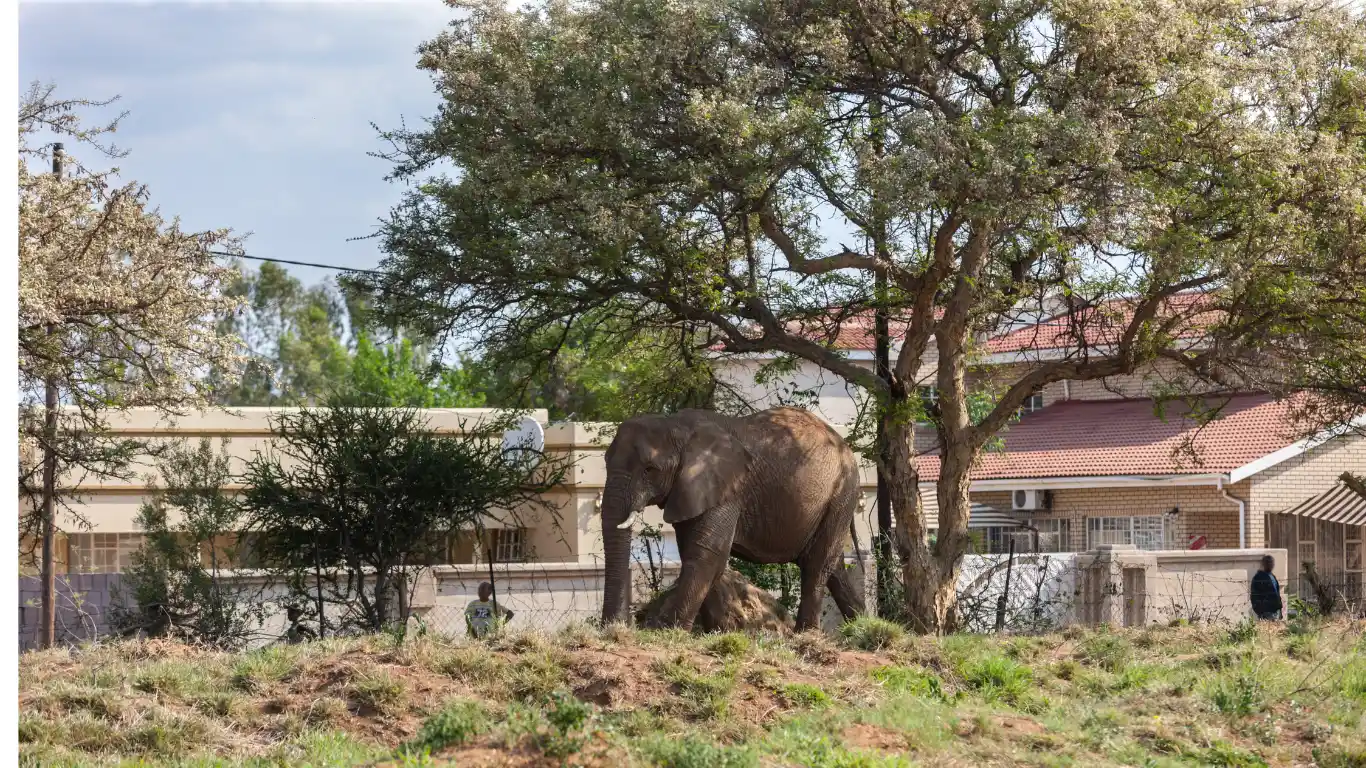Introduction
Human-animal conflict has always existed since the beginning of humankind and civilization. The early human’s cave paintings and art were dominated by encounters with wild animals. In fact, the threat and danger posed by wild animals were among the key reasons prompting human beings to craft ingenious weapons and shift to agricultural practices.
Today, due to the intermingling of various factors like deforestation, agricultural expansion, and climate change-induced species migration, humans and wild animals are landlocked once again. This has resulted in violent conflicts that leave behind loss of life, economic misery, injuries, and a sense of revengefulness. Understanding and addressing human-wildlife conflict is crucial to fostering coexistence and ensuring a sustainable future.
Key Causes of Human-Animal Conflict

Expanding Human Populations
The global human population has grown significantly over the past century, increasing demands for land and resources. This expansion often results in habitat loss for wildlife as areas are urbanized, developed for infrastructure, or converted into agricultural land. The rapid urbanization process brings humans closer to previously untouched wildlife habitats, creating more opportunities for interaction and conflict. This trend is especially pronounced in regions where population density is high and natural resources are limited.
Agricultural Expansion
Transforming natural habitats into farmlands disrupts ecosystems and deprives wildlife of food and shelter. As a result, animals often venture into agricultural areas, feeding on crops or preying on livestock, leading to conflicts with local communities. The dependence of many rural populations on farming heightens the stakes of such conflicts, as the loss of crops or livestock can lead to economic hardship. In many cases, the destruction of farmland by wildlife prompts retaliatory actions, further exacerbating tensions.
Climate Change
Shifts in climate patterns force wildlife to migrate in search of food, water, and suitable habitats. These migrations frequently bring animals into closer contact with human populations, increasing the likelihood of conflict. Extreme weather events, such as droughts and floods, further strain the availability of resources, intensifying competition between humans and wildlife. The unpredictability of these changes makes it challenging for both humans and animals to adapt, increasing the potential for clashes.
Competition for Resources
As humans encroach on wildlife habitats, both humans and animals compete for essential resources like water and food. This competition intensifies in areas where these resources are limited, exacerbating tensions. Overuse and exploitation of natural resources by humans often leave wildlife with no choice but to venture into human-occupied areas, seeking sustenance. The resulting encounters can lead to destructive outcomes for both parties.
Impacts of Human-Animal Conflict

Economic Losses
Damage to crops and livestock predation can lead to substantial financial setbacks for farmers and local communities, impacting their livelihoods. In regions heavily reliant on agriculture, these losses can ripple through entire economies, affecting food security and market stability.
Threats to Human Safety
Encounters with large predators or aggressive wildlife can result in injuries or fatalities, particularly in areas where humans and wildlife coexist closely. These incidents create fear and resentment toward wildlife, often leading to harmful actions against animals in an effort to ensure safety.
Environmental Degradation
The consequences of conflict can disrupt ecosystems, leading to imbalances that affect biodiversity and ecological health. For instance, the loss of key species due to retaliatory killings can trigger a cascade of effects, destabilizing entire ecosystems and reducing their resilience to environmental changes.
Social and Cultural Tensions
Human-animal conflict can also strain relationships within and between communities, particularly when different groups have conflicting views on how to address the issue. These tensions can hinder cooperative efforts and delay the implementation of effective solutions.
Strategies to Mitigate Conflict
Addressing human-animal conflict requires a holistic and collaborative approach. Below are some effective strategies:
Community Engagement and Education: Raising awareness about wildlife behavior and promoting coexistence can reduce conflicts. Educational initiatives help communities understand the importance of wildlife and adopt practices that minimize risk. Empowering local populations with knowledge and tools to manage conflicts fosters a sense of ownership and responsibility, paving the way for sustainable solutions.
Land Use Planning: Implementing sustainable land use strategies, such as planting crops less attractive to wildlife or creating buffer zones, can mitigate conflicts. Designating protected areas and wildlife corridors can also help maintain habitats while reducing encounters between humans and animals. Thoughtful planning ensures that human development does not come at the expense of ecological balance.
Use of Technology: Advances in technology, such as drones and early warning systems, can help monitor wildlife movements and prevent encounters. For example, wireless systems have successfully reduced human-elephant conflicts in some regions. The integration of technology into conflict management provides innovative tools for real-time responses and long-term planning.
Policy Implementation: Governments play a crucial role in enacting and enforcing policies that protect both humans and wildlife. Effective policies balance conservation efforts with the needs of local communities. Incentivizing conservation-friendly practices and penalizing harmful actions are vital components of a comprehensive policy framework.
Collaboration Between Stakeholders: Successful conflict mitigation requires collaboration between governments, conservation organizations, researchers, and local communities. Pooling resources and expertise can lead to more effective and sustainable solutions, ensuring that all voices are heard and needs are addressed.
Conclusion
Human-animal conflict is a multifaceted issue that demands innovative solutions and cooperative efforts. By understanding its causes and impacts, and implementing strategies to mitigate conflicts, we can pave the way for a harmonious coexistence between humans and wildlife. Addressing this challenge is not only vital for ecological sustainability but also for ensuring the well-being of future generations. A unified approach that values both human and animal life is essential to create a world where coexistence is not only possible but thrives as a cornerstone of sustainable development.






